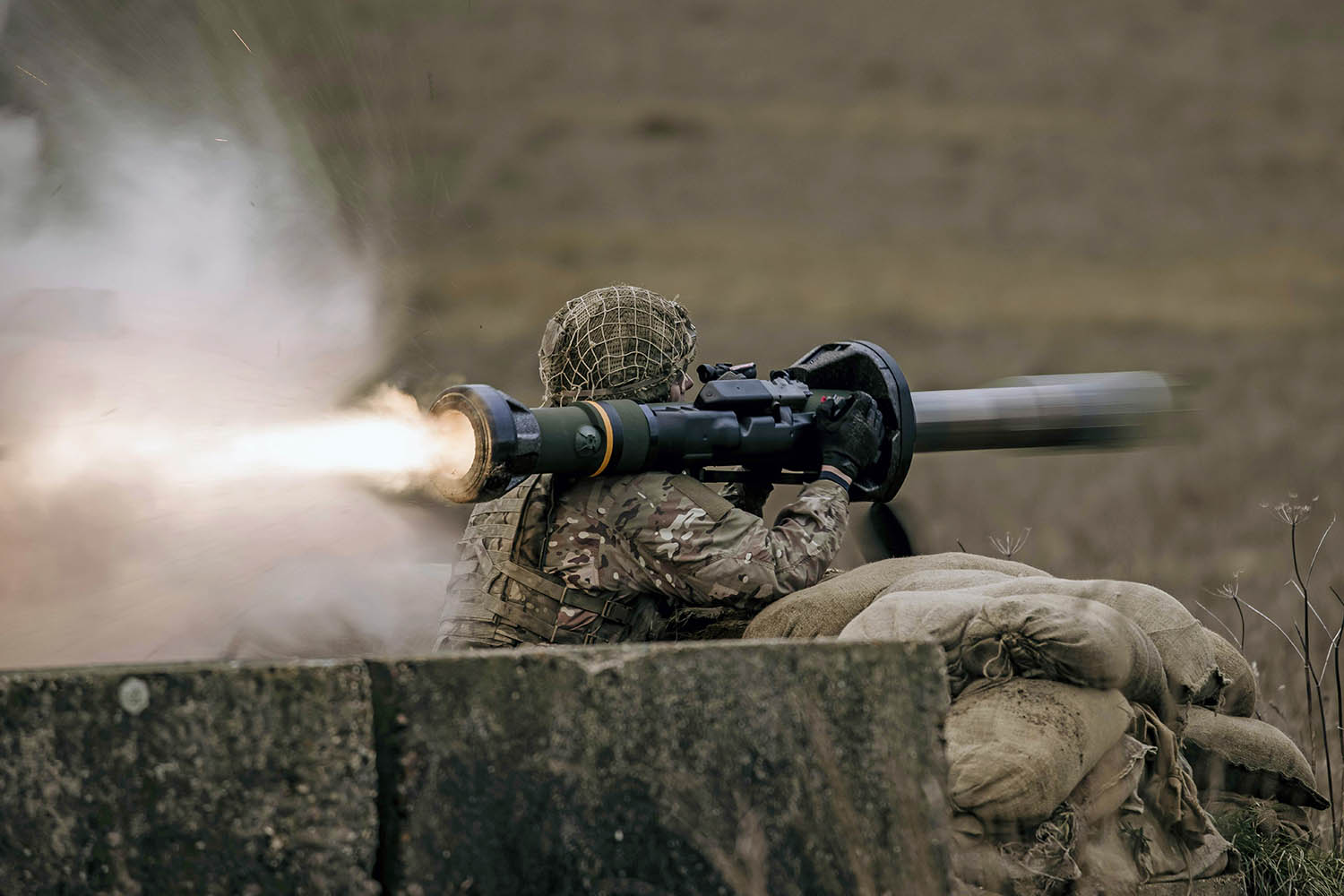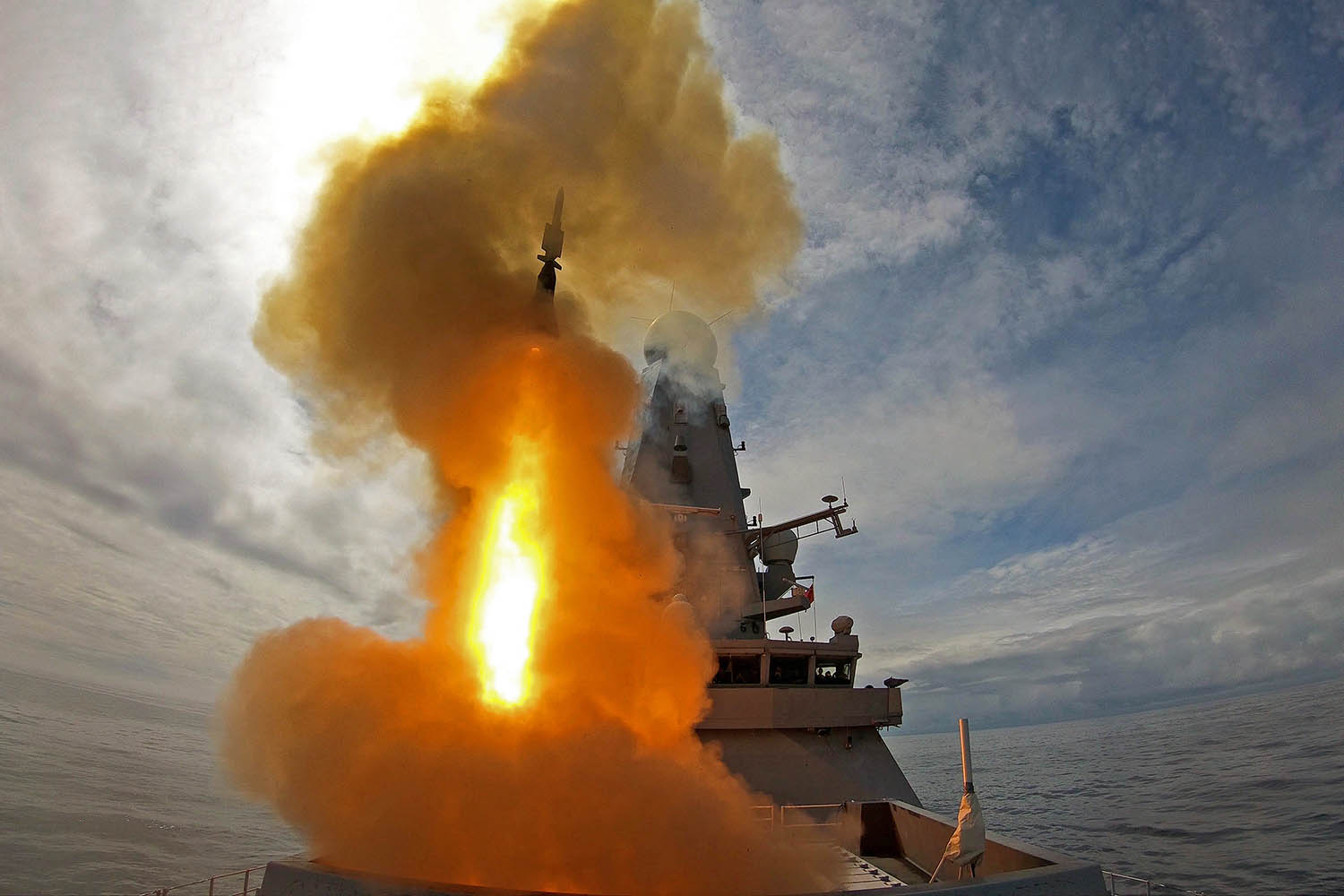For much of the 1830s, Lord Palmerston stood behind a tall desk in the Foreign Office, staring down into Whitehall as he fired off dispatches to all corners of the empire, day and night. To make sure neither friend nor foe thought his polite messages were requests, he made sure that the Royal Navy was on hand to back up his words with ammunition.
Gunboat diplomacy was born and the presence of the navy has been integral to British power projection ever since. The capacity for violence was key to power and influence in international affairs. Scroll forward two centuries and it is the same realpolitik today.
With this difference: unlike two centuries ago, when navy decks were stacked with cannonballs to bolster the talking, today the Royal Navy, and the rest of the UK’s armed forces, are woefully short of weapons to back up London’s posturing.
Britain is spending far too little on its platforms – the ships, aircraft and tanks that carry its threat of force with them – but what is worse is that even less is being spent on weapons to make them lethal. Silos that should hold the weapons are often thinly loaded or even bare. The Royal Navy all too often lacks the weapons to sink other ships, or strike at targets on land. The Royal Air Force is poorly placed to defend Britain’s skies from missile attacks. The army cannot protect the space above its troops’ heads, and lacks the artillery or tanks to strike at opposing forces.
Britain needs many, many more defensive weapons and an integrated air and missile defence
Matthew Savill, director of military sciences, Rusi
The government insists this is changing. Last month it accepted all 62 recommendations of a strategic defence review intended to help Britain “pivot to a new way of war”. It has committed to spending 2.6% of gross domestic product on defence by 2027 and – under intense pressure on Nato from the Trump administration – 5% by 2035. The risk is that this extra spending comes too late or proves illusory. The reality, in the meantime, is a Potemkin military with weapons platforms fit for parades and air tattoos but not the battlefield.
Today’s warships have a more complex job than those of 200 years ago. Then the task was to be able to threaten coastal centres and defeat other nations’ ships of the line. There were no submarines or enemy bombers to worry about, and no real need to attack the interior of most countries. Now the UK needs to be able to do all these things, with more sophisticated and longer-range weapons
Thirteen new Type 26 and Type 31 frigates are being built on the Clyde and Forth to enter service in the coming decade. These ships will be the backbone of the navy for the next 30 to 40 years and are the direct descendants of the 19th-century general purpose warships. Unfortunately, as they are being built today, they lack the ammunition to lend weight to their imposing presence.
The Type 26’s primary job is to find, track and destroy enemy submarines. It is well-enough equipped to do that, with a sophisticated sonar and combat system, and the ability to launch lightweight torpedoes from its missile silos or from the helicopter that it carries.
But what about the other jobs? As originally ordered, neither class of frigate has anti-ship missiles heavy enough to take on and sink enemy vessels at distance. Exocet, a French-made missile that became infamous in the Falklands war when it was used to sink HMS Sheffield and the Atlantic Conveyor, is the archetype of this kind of weapon. A new naval strike missile (NSM) designed by Norway will eventually be fitted to the Type 26 and Type 31 ships, but not until an upgrade an unknown number of years down the line. Assuming, of course, at that point that there is money available to pay for it.
The Ministry of Defence (MoD) says the UK is “entering a new era of warfighting readiness, backed by the largest sustained increase in defence spending since the end of the cold war”, but did not respond to detailed questions about funding for the NSM or the timetable for its deployment.
In its absence, no Royal Navy warship at sea carries an Exocet-class weapon capable of sinking another ship, and this has been the case since the previous Harpoon missile was retired in 2023. HMS Portland, the second of the ageing Type 23 frigates to be fitted with the NSM after HMS Somerset, should be at sea with it in the next year or two, but it will be at least another decade before the capability is widespread in the navy.
What about the ability to attack targets deep inland with cruise missiles? Weapons such as the Tomahawk and Kalibr have frequently been used by the US to attack targets in Afghanistan and most recently Iran, and by Russia in Syria and Ukraine. France has a shorter-range cruise missile mounted on its equivalent of the Type 26 frigate. But the only Royal Navy warships capable of attacking targets deep inland are its submarines – a scarce resource indeed.
The picture is not much brighter when it comes to defending the airspace above the fleet. This is the primary role for the Type 45 destroyer, built over the first decade of this century. It carries the Aster 30 missile, a fast and agile weapon capable of shooting down attacking aircraft or sea-skimming Exocet-type missiles.
The Aster 30 was designed in the 1990s as a counter to 1980s-era threats. It has badly needed updating for well over a decade to be effective against longer-range and faster ballistic missiles fired from land. But neither the UK nor France has put significant money into the task. By contrast, the US has invested billions into its equivalent Standard Missile family, whose SM-3 version is being developed to shoot down ballistic missiles while they are in space.
The MoD declined to comment on upgrades to the Aster, or when new stocks will be delivered. Until they are, the navy’s arsenal against ships, land targets or air threats is threadbare, nonexistent or facing obsolescence.
It is a set of problems shared by the rest of the UK’s armed forces. If Britain was subjected to the kind of attack that Iran launched against Israel in the recent 12-day war, the UK would have been lucky to shoot down 10% of any such bombardment. This is because Israel has built a multilayered defensive shield over the last 25 years. The famous Iron Dome is a lower-level tier designed to hit shorter-range and slower-moving missiles coming from Gaza or Lebanon.
More recent developments are David’s Sling and Arrow, designed to shoot down longer-range and faster-moving missiles, with the top cover provided by Thaad (Terminal High-Altitude Area Defence), a sophisticated US system provided to Israel in 2024 and capable of destroying high-speed missiles while still in space.
Britain has no equivalent shield. Almost all of the UK’s air defence effort has gone into fighter jets such as the Typhoon and F-35 fleets. These jets are highly effective against other aircraft but cannot shoot down incoming ballistic missiles moving at substantially more than 3,000mph – unless they get very lucky. Previous defence reviews have looked at acquiring missile defences but have, in the end, chosen to spend the available money on manned aircraft instead.
“Nobody is ever going to announce how many missiles are in their stockpile… [but] we need many, many more defensive weapons and integrated air and missile defence,” said Matthew Savill, director of military sciences at the Royal United Services Institute (Rusi). “What we need is to work out what is the most important stuff in the UK to defend, and then defend that,” he added – including with long-range strike weapons to neutralise attacking forces before they can launch.
The Typhoon has a wide weapons suite available to it, but some of these, such as the Storm Shadow cruise missile and Brimstone antitank weapon, have had their stocks eroded by UK use in conflicts such as Libya, Afghanistan, against Islamic State, and through donations to Ukraine.

Next generation light anti-tank weapons are among more than 12,000 arms sent to Ukraine by the MoD
In response to questions from The Observer, officials said more than 12,000 anti-tank weapons, including Brimstone missiles and NLAWs (next generation light anti-tank weapons), have been sent to Ukraine and that thousands of replacement NLAWs have been ordered.
The British army similarly faces threats from above, especially at overseas bases. Its old Rapier air defence system was, in effect, obsolete by 2000, but only now are small numbers of replacement Sky Sabre systems being introduced. One system protects the Falkland Islands airbase, and one is used as an umbrella over British troops stationed in Estonia. If proposals for any kind of UK peacekeeping forces in Ukraine went ahead, the army would not have enough Sky Sabre systems to protect the Estonian group and the Ukrainian one at the same time.
There are many other examples of the threadbare state of the UK’s defences. In some, weapons stocks have been deliberately run down or starved of investment in the name of keeping up the numbers of ships, aircraft and army battalions.
The UK’s recent order of nuclear-capable American F-35A jets is “politically symbolic”, according to Andrew Dorman, professor of international security at King’s College London, since it preserves Britain’s dependence on the US for spare parts, nuclear bombs and the integration of conventional weapons systems the RAF actually needs – which remains a long way off.
In fairness to commanders and procurement officials, ships, aircraft and tanks all take longer to make than missiles and bombs, and training crews to use them is a long haul. So maintaining a skeleton structure in times of retrenchment preserves capabilities and skills against a day when they may once again be needed.
But in preserving a skeleton while pretending that it is a whole body with muscle and sinew, military leaders risk blurring the reality of what they really have and do not have. In putting the best face on things for their political masters, the armed forces may inadvertently collude in the idea that no action need be taken.
“The UK has a problem that we are not configured for an intensive war,” said Rusi’s Savill. “We could fight a short, sharp conflict, but we don’t have enough people and equipment to suffer losses, and we know – because we’ve seen what it looks like in Ukraine – that we would use up most of our ammunition very quickly.”
The imbalance between the buying and operation of platforms and buying modern complex weapons shows starkly in the numbers. The UK spends about £25bn a year on new equipment, and a similar amount operating and maintaining these platforms. But it spends only about £1bn a year developing and buying new complex weapons. That is no more than “entry money that gets you in the game”, said Savill. Yet it is the vital part of making the efforts of the armed forces stick.
Modern complex weapons are expensive to produce. Even the simplest antitank weapon such as the NLAW costs £20,000 a shot. Antitank weapons fired from aircraft, such as Brimstone, cost almost 10 times as much. The most sophisticated weapons, such as the Aster 30 air defence missile and the Storm Shadow or Tomahawk cruise weapons are about £2m each. Small wonder stocks are low.
But with new fighter jets costing £100m each, and new frigates more than £1bn each, sending them into combat without the key tools they need to succeed is a false economy. A frigate that cannot fight is not a warship at all. As almost everyone agrees, the UK needs to spend more on its defence, but with most of the focus on its ships, aircraft and soldiers, the key component risks being lost in the smoke.
It is said that the story of the original Potemkin village was itself a fiction designed to smear its supposed builder. Yet the idea contains an essential truth. In a world of spin and hype, it is all too easy for a facade to become the new reality and for reality to be forgotten. Palmerston would not approve.
Additional reporting by Nina Kuryata and Fred Harter
Bernard Gray was chief of defence materiel and UK national armaments director from 2011-2015
Photographs by Ben Shread/UK Ministry of Defence/UK MoD Crown

